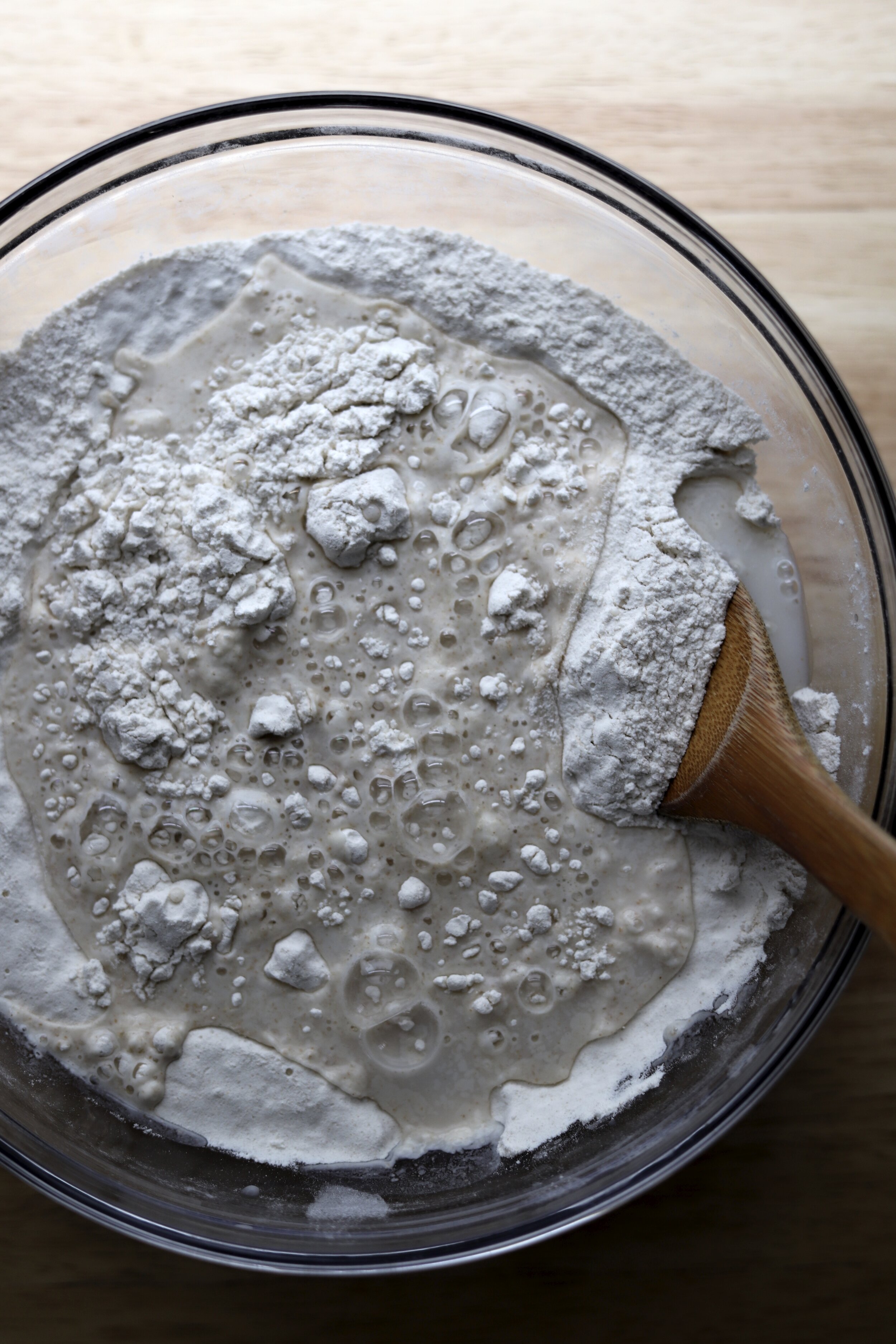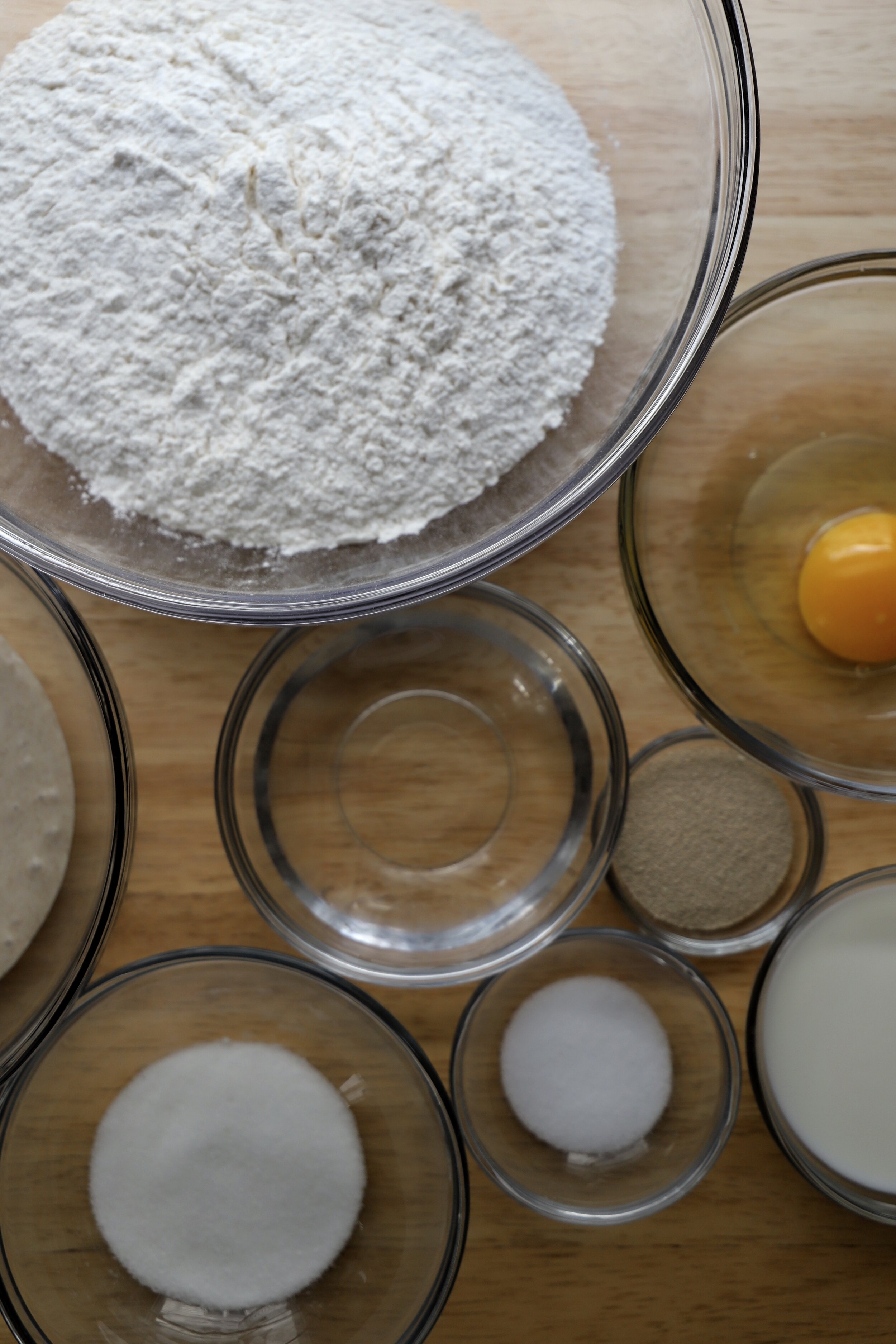Baker’s Percentages
When I first started exploring sourdough baking, I noticed a lot of lingo, acronyms and percentages. To be honest, I found it very intimidating and inaccessible. For the first several months I stuck to using recipes I found online that only listed things in grams and used simple, easy to understand terms. Things like the percentages and words like “autolyse” were very confusing to me.
But here’s the thing: once I sat down and figured out the math around baker’s percentages it totally changed my baking game. It allowed me to have a standard base formula that I knew would work every time (or almost every time), and then I could make small tweaks based on fillings, different liquids, etc. Using percentages based on a recipe that you KNOW will work also allows you to easily scale up or down.
Below I am going to try to break it down for you in a way that makes sense. Once you become comfortable with these percentages, you’ll be able to create your own sourdough recipes using different combinations of flour, water, salt, starter and fillings! And you’ll have a better idea of what people are talking about when they say something like “I pushed the hydration up to 85% for this loaf.”
Let’s start with a basic recipe in grams using nice, even numbers:
400g flour
300g water
80g starter
10g salt
When working with percentages, everything is based on the total weight of the flour. That is your north star. Let’s take the example above, broken down into percentages and then I’ll explain how I got there:
400g total flour = 100% flour
300g water = 75%
80g starter = 20%
10g salt = 2.5%
OK so how did I do that? Remember that everything goes back to the total weight of flour. Let’s do a little math to figure out the water, and remember when using percentages in multiplication you need to move the decimal place (yay elementary school!):
400g x .75 = 300g
Therefore, for a recipe that says “75%” water, you multiply .75 times the total flour, and the answer gives you your water in grams. Let’s do the starter now:
400g x .20 = 80g
And there you have it! For a recipe that says “20% starter”, multiply .20 times the total flour, and the answer gives you your starter in grams. And lastly, let’s do the salt:
400g x .025 = 10g
If you want to, you can also do this math backwards using division. I don’t want to confuse you too much so I’ll just demonstrate one and if you are intrigued you can keep going. If you see a recipe (like the one above) and you wonder to yourself, what % water is that (if it’s only listed in grams) you can do the following (always put the total flour in grams in the denominator, or the bottom of the fraction/division):
water/flour x 100 = the percentage; in other words, 300/400 = .75 x 100 = 75%
I promise once you practice this you’ll figure it out and it will change your baking game! Once I did this, I was able to settle on 74% as my favorite water (or hydration) level. Now when I see recipes and someone listed “80% water” I can either use that or dial it back down to my beloved 74%. This is all about trial and error - and there is no “right” way. I’ve come to love certain percentages for sourdough over time, and you can do the same.
One thing to note is that the percentages might change if you’re using different brands and types of flour. Whole wheat that is stone milled, for example, is much “thirstier” then something like a commercially milled King Arthur bread flour. The more whole wheat you add, the more water you might want to add as well. I have a whole wheat recipe coming soon that will talk more about this.
For now, I hope this was helpful! Don’t hesitate to reach out on Instagram @nokneadtoworry or email nokneadtoworry@gmail.com if you have questions.



